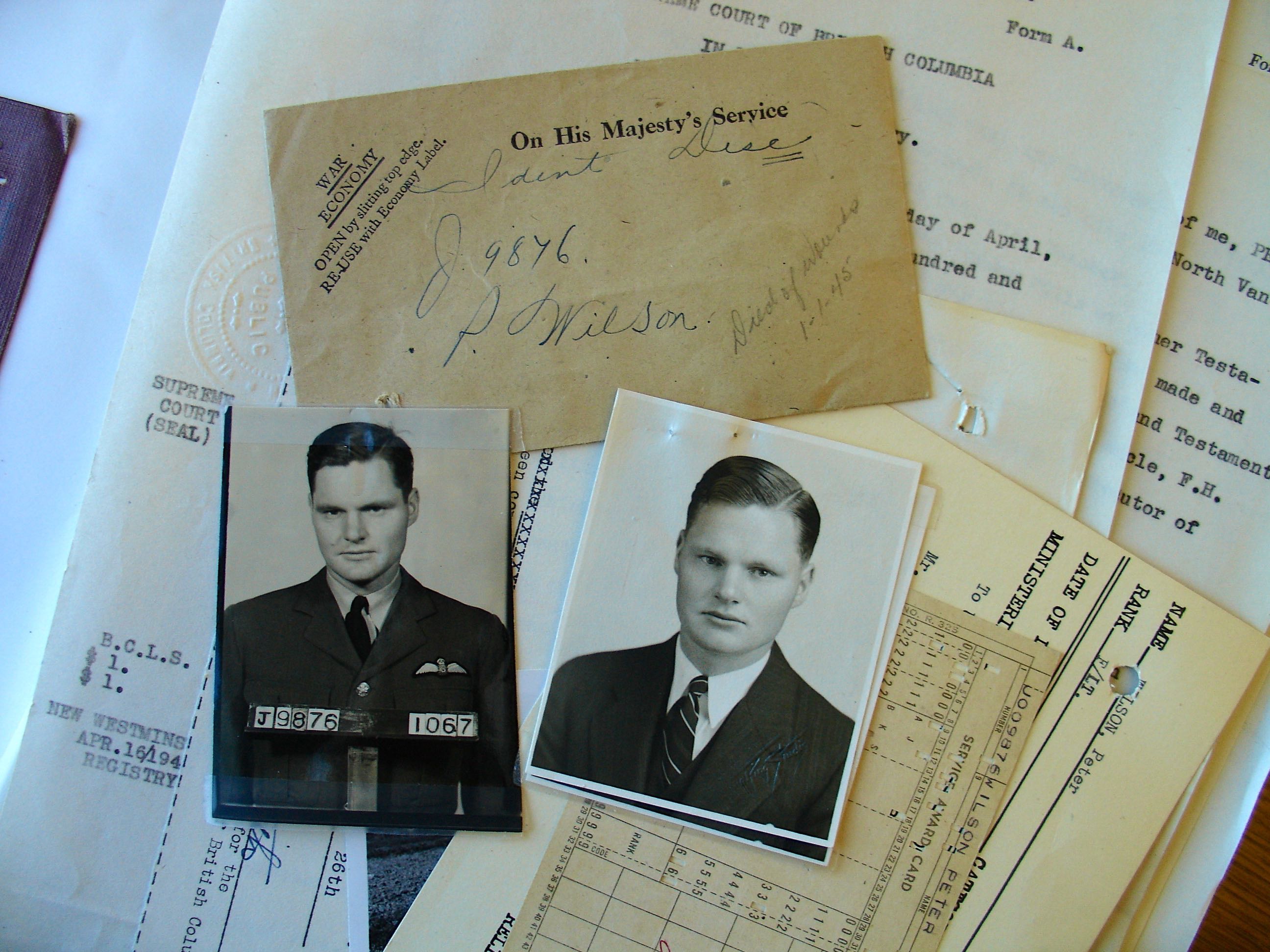
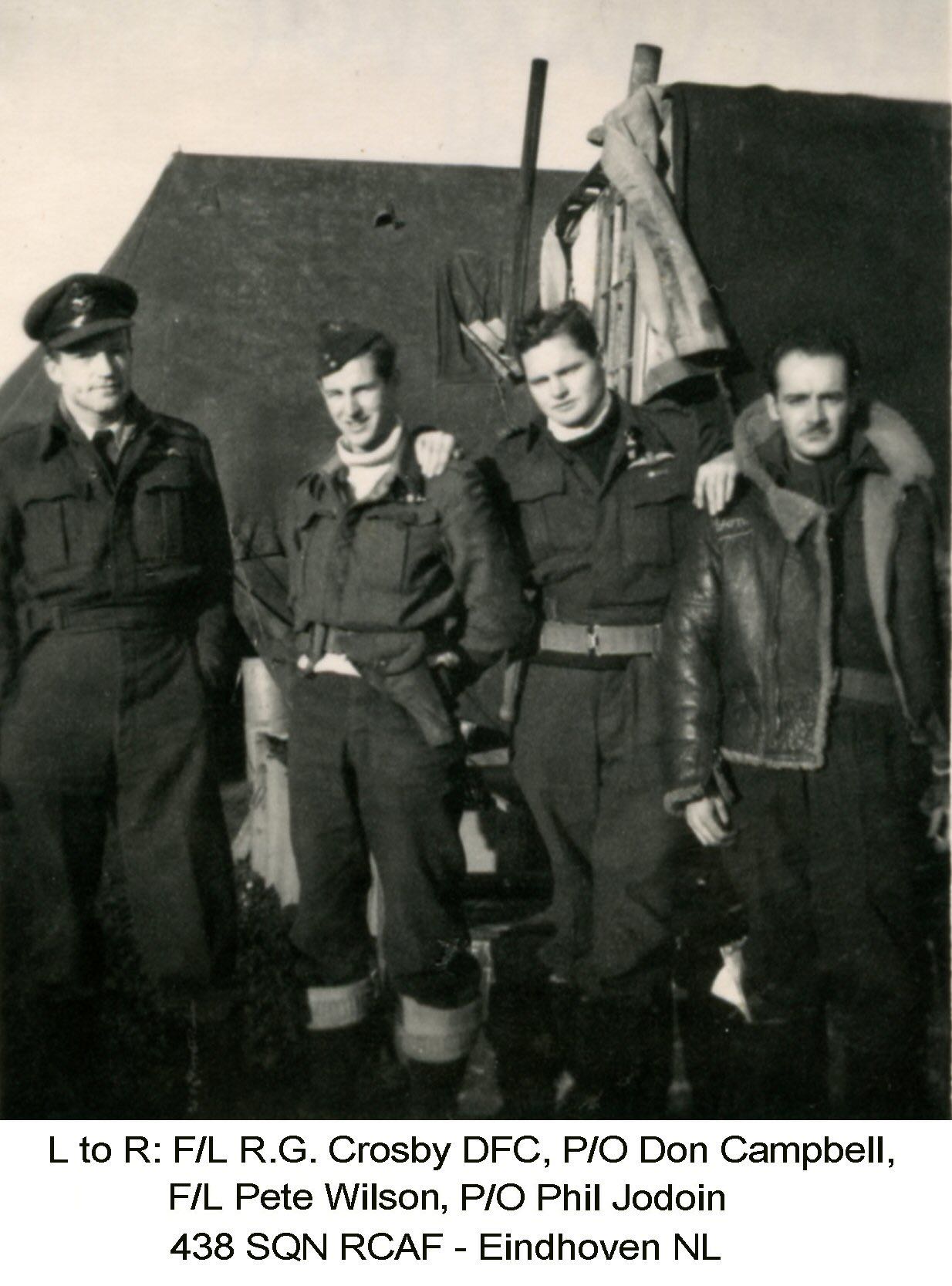
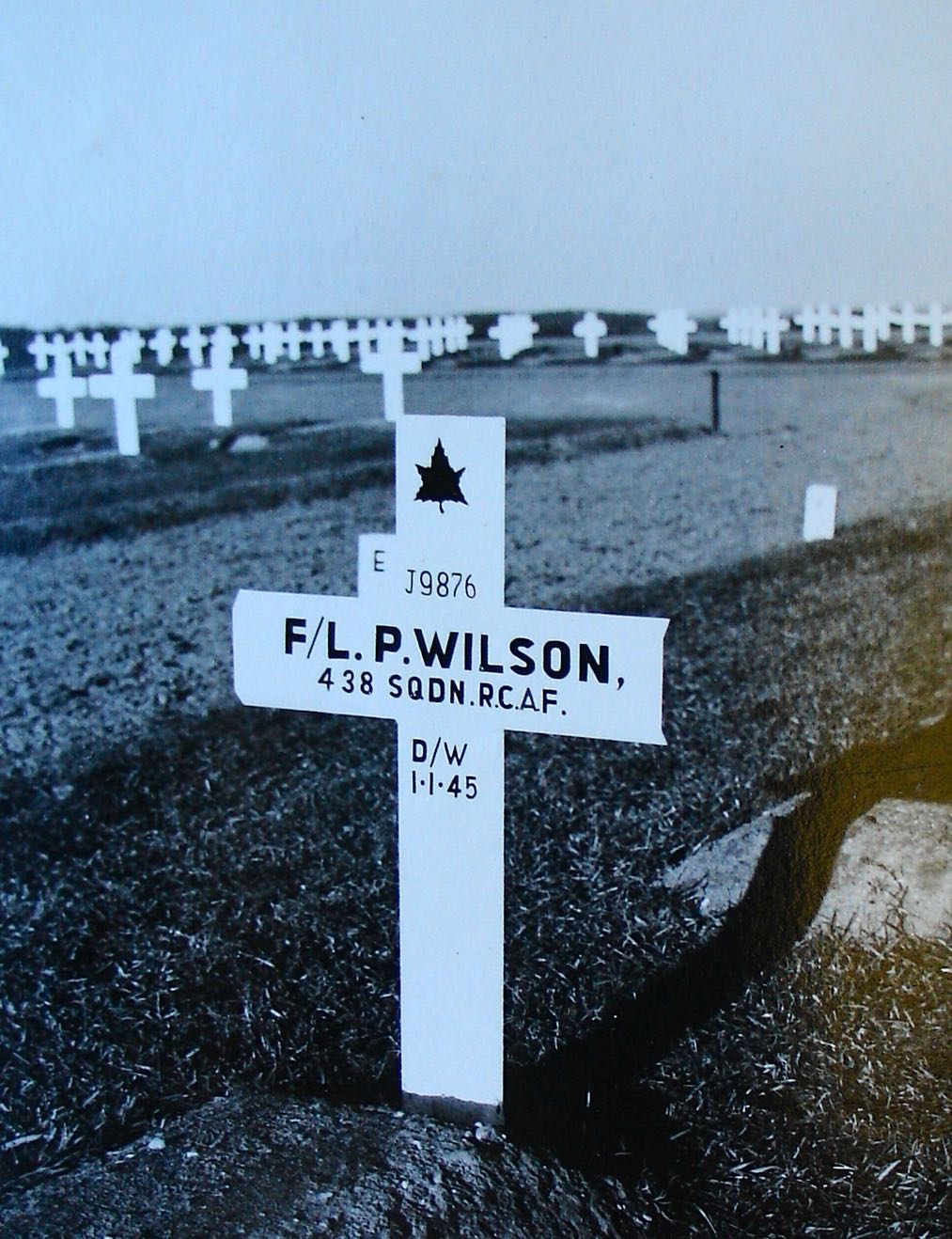
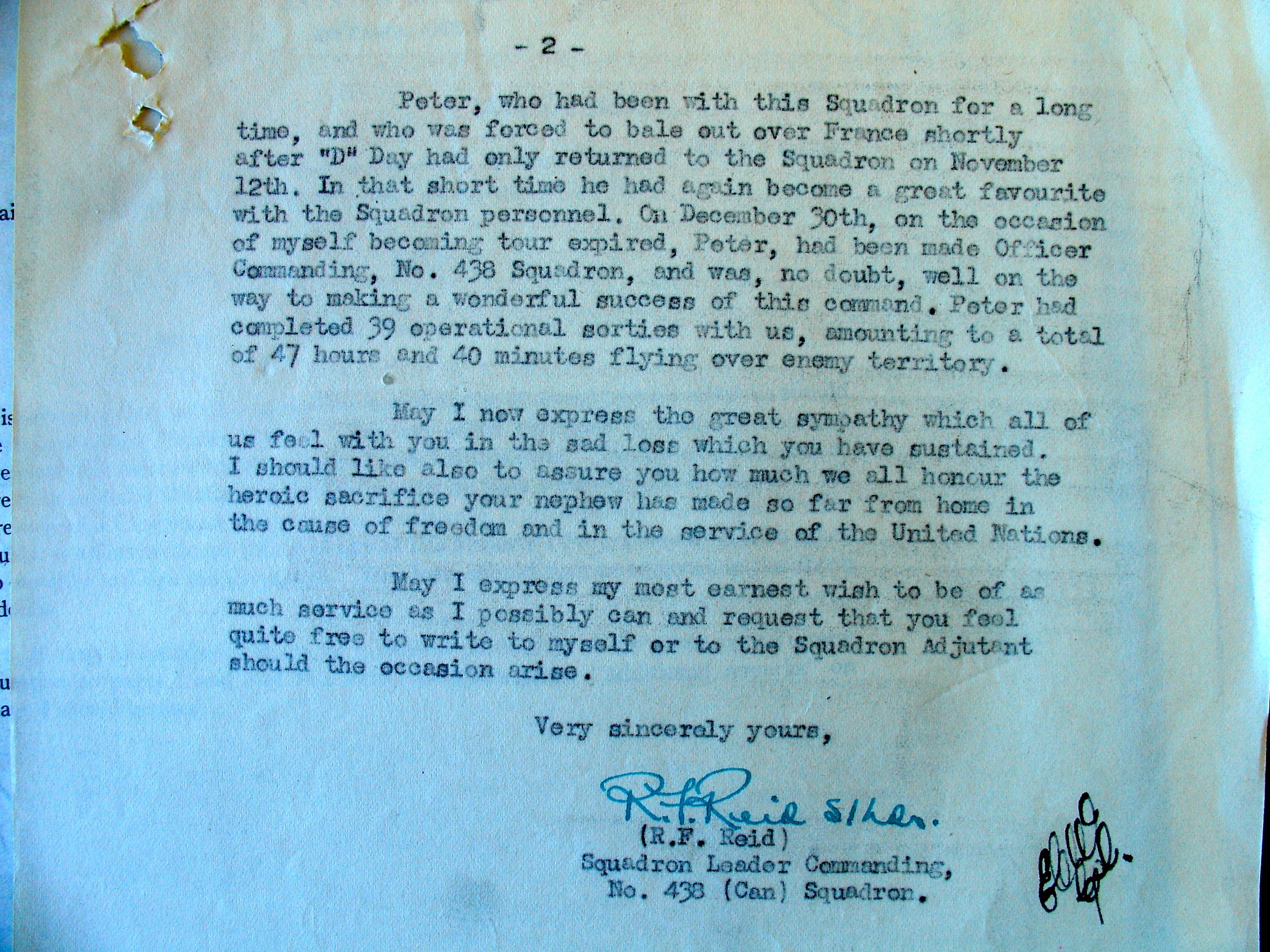
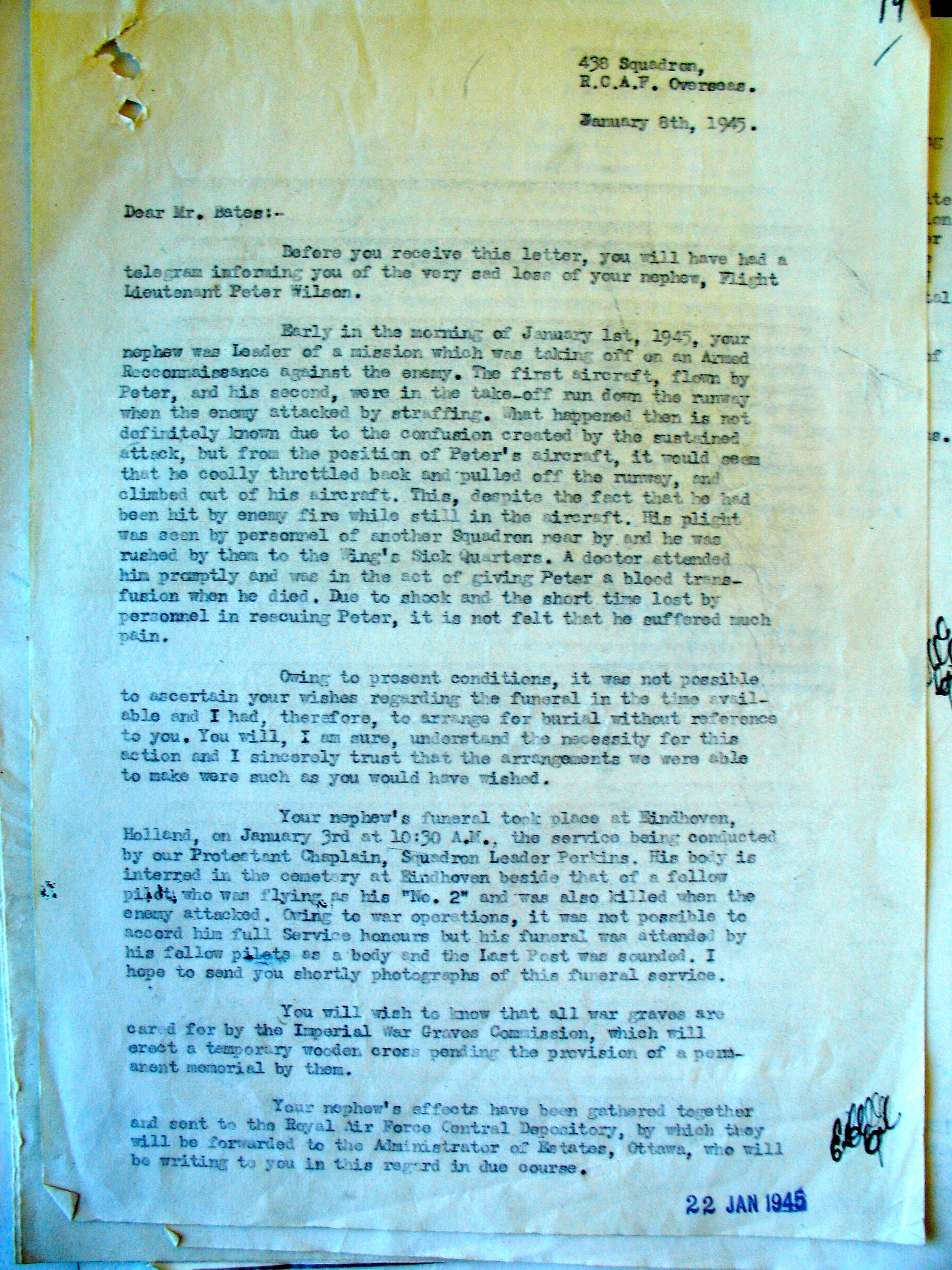
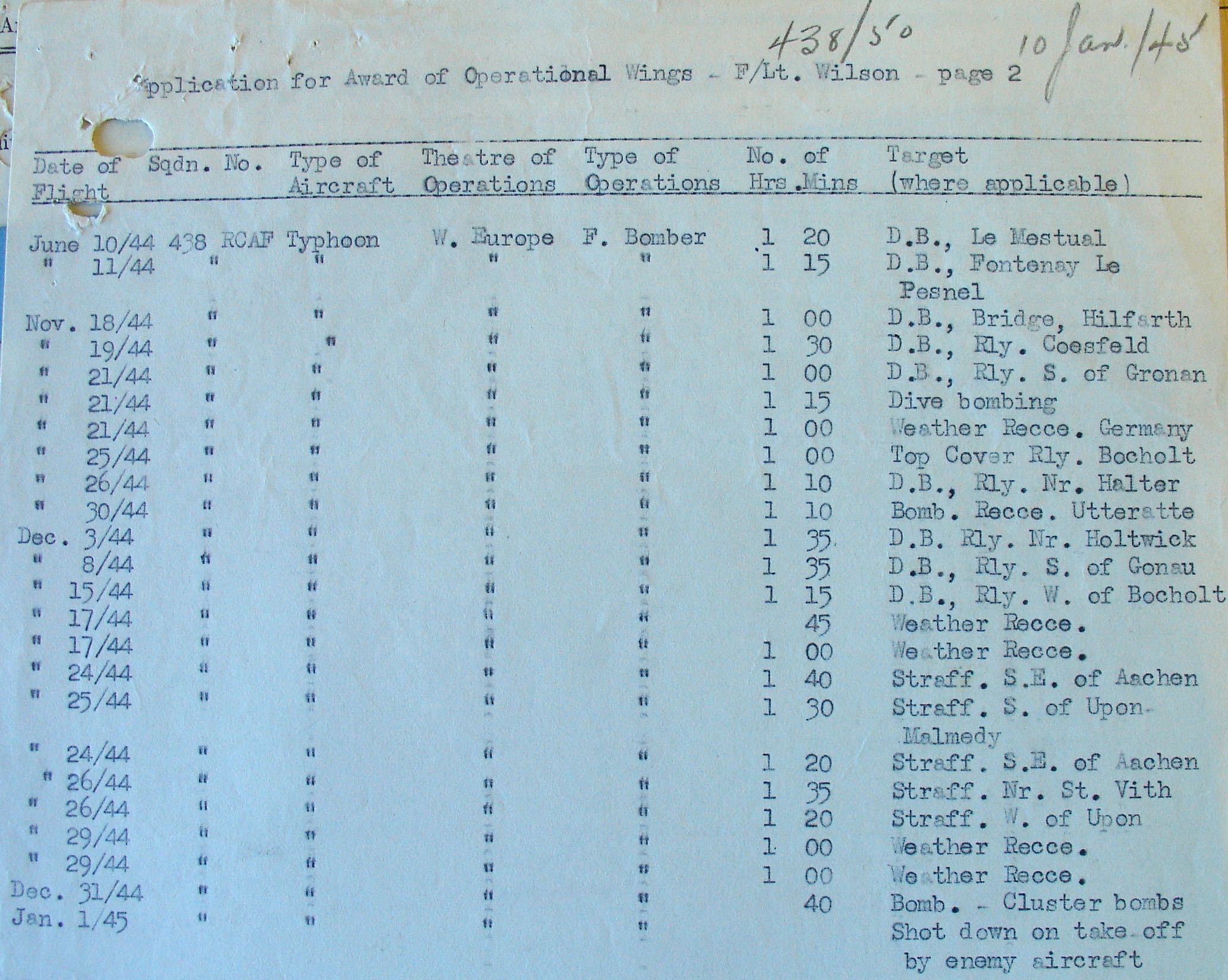
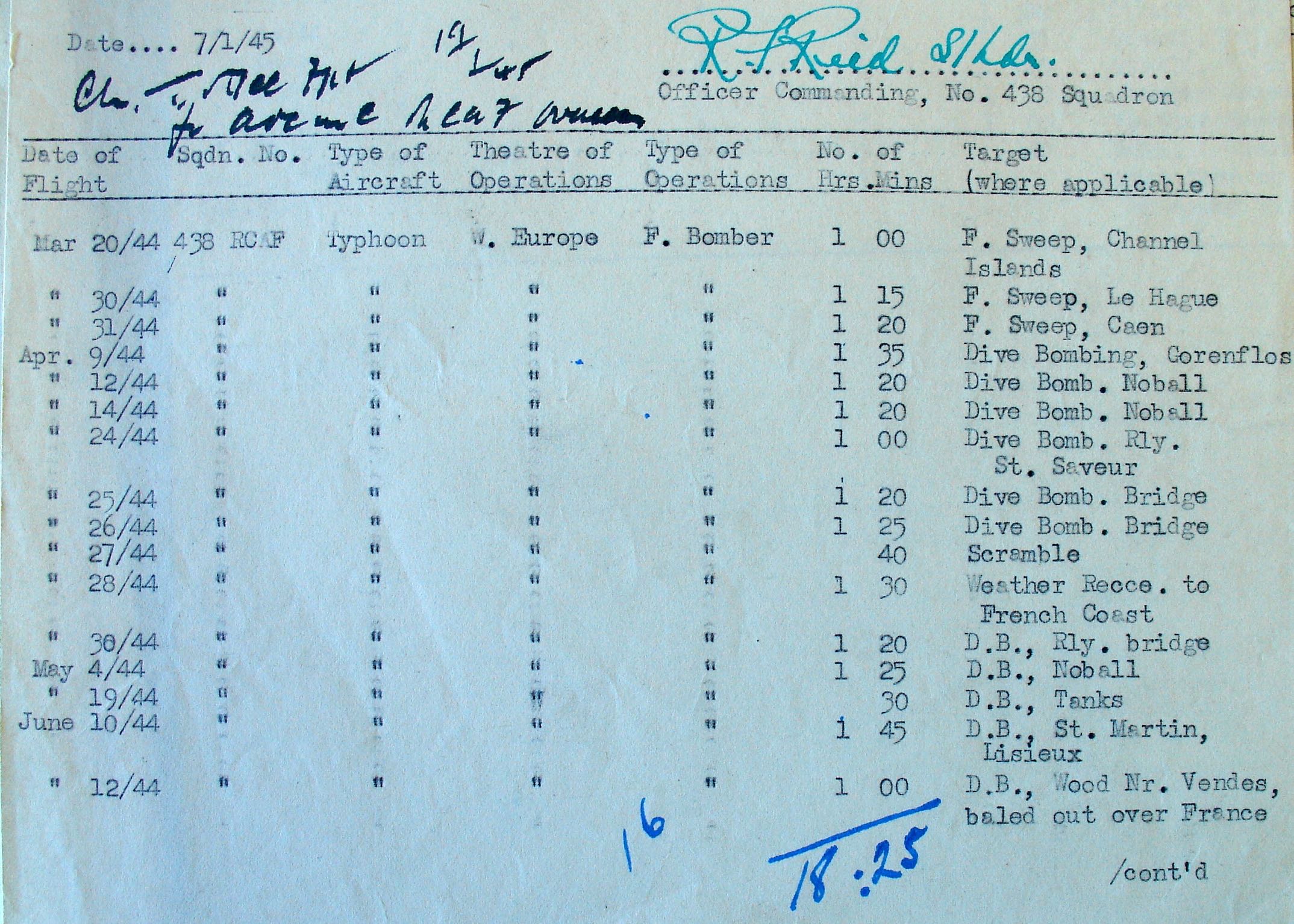
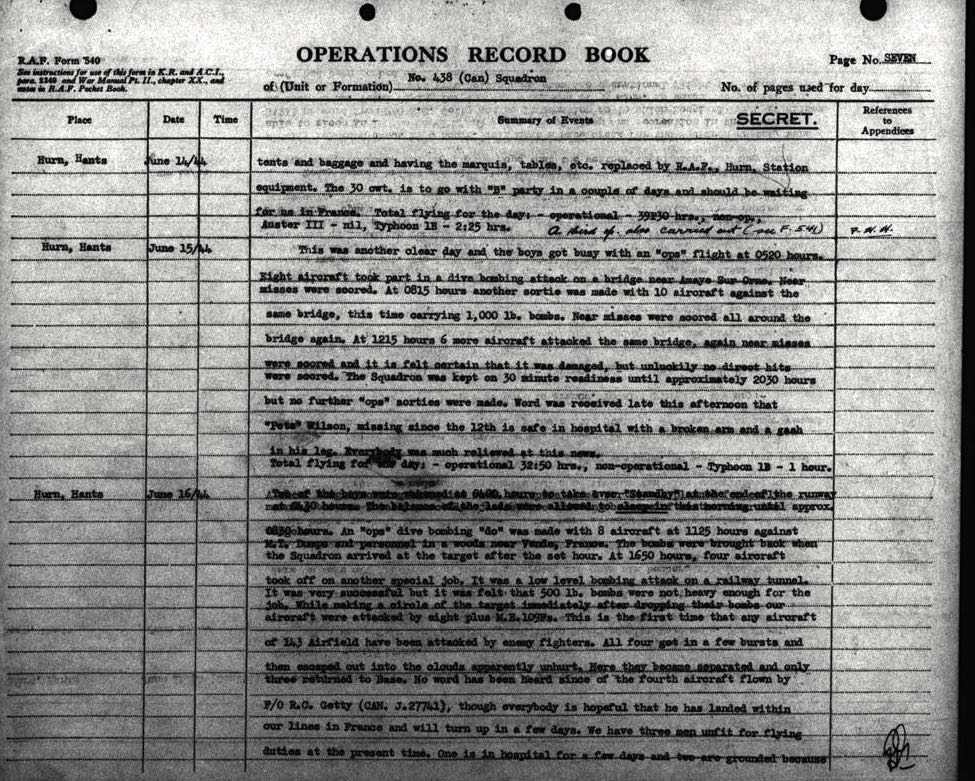
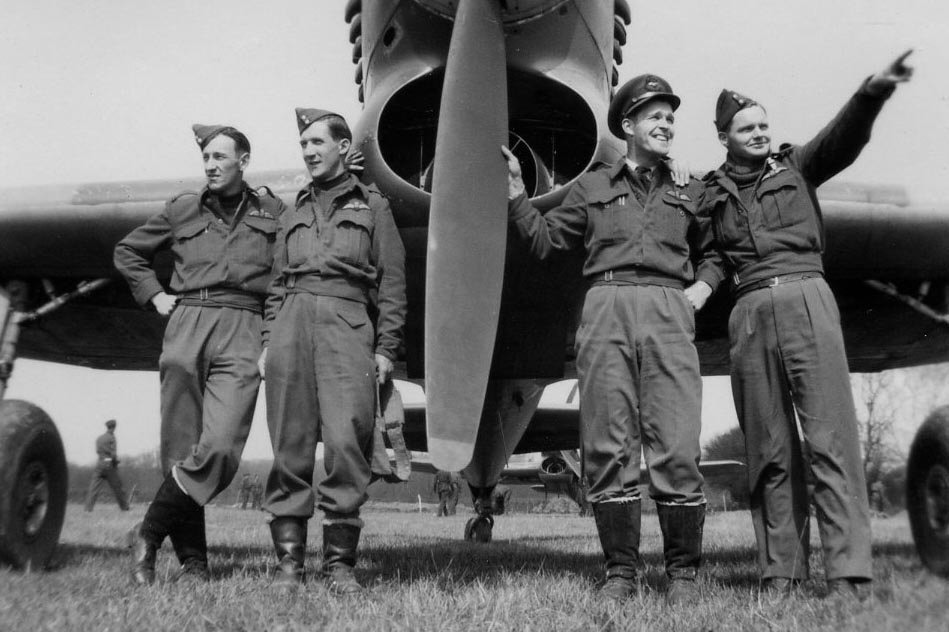
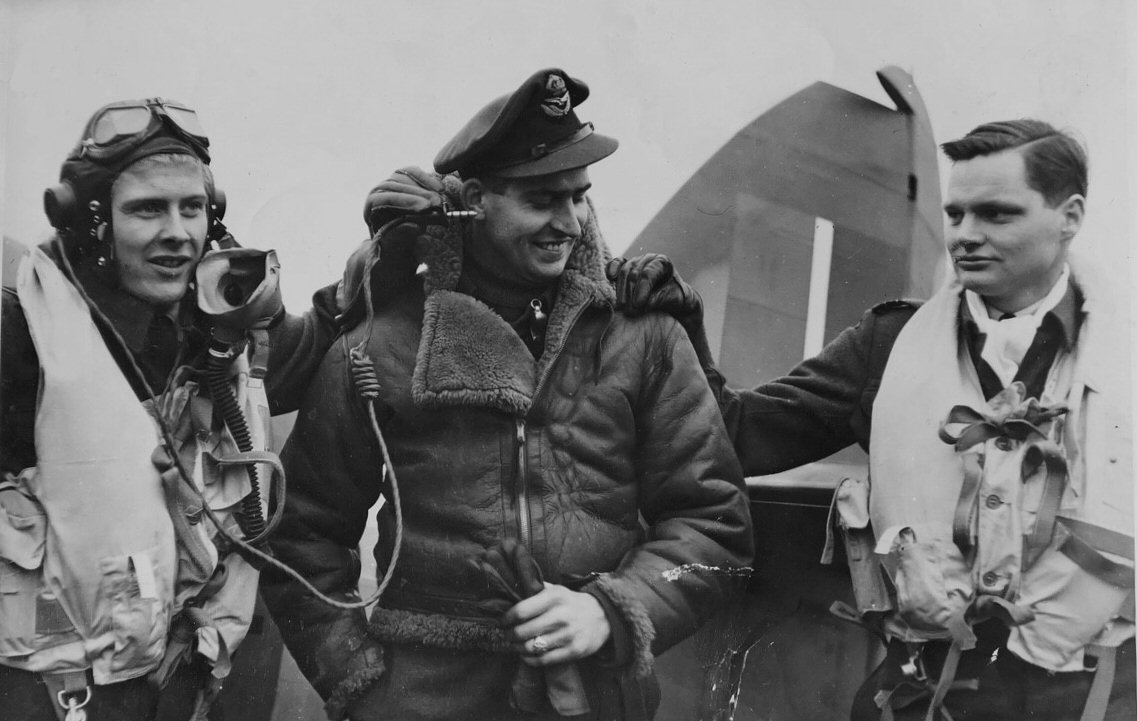
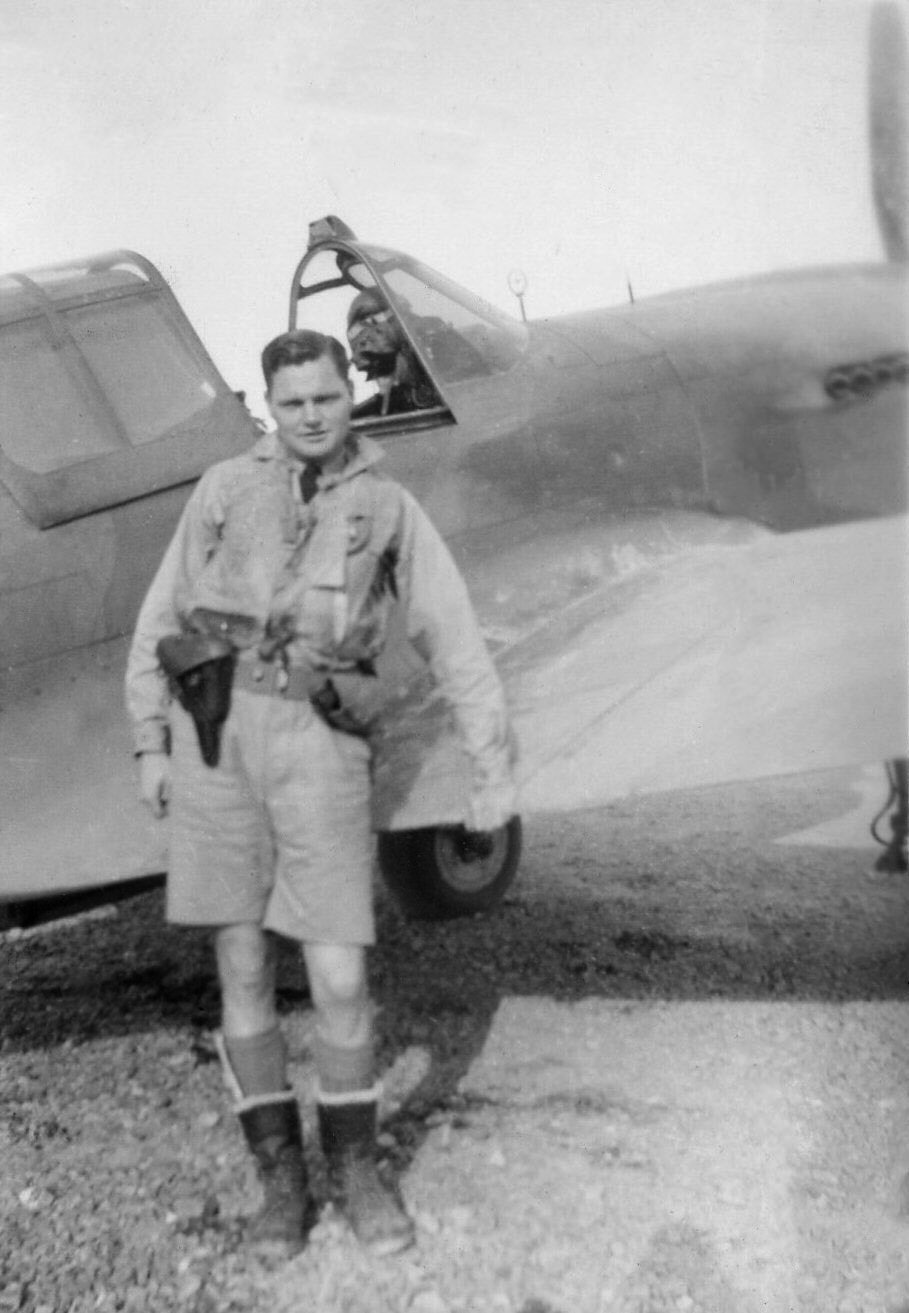
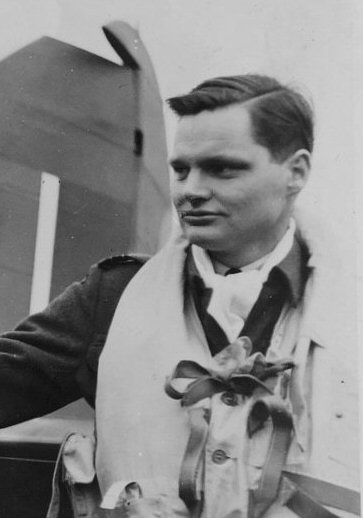
1914 (Approximate) - January 1, 1945












Peter Wilson was the son of Thomas W. and Edith J. P. Wilson of North Vancouver, and the nephew of Fred K. H. Bates, who had adopted him when Peter was 11 years old. They continuing to reside together until Peter's enlistment in the RCAF. He had two brothers and one sister. He was Anglican. Peter Wilson had been the Vice Principal at Chesterfield School, North Vancouver, BC, 1934-1940. (The school operated from 1913 to 1942 and has since been converted into an apartment building.) He taught mathematics. He indicated he wanted to remain in the RCAF after the war.
Wilson had seven hours dual and 1/2 hour as a passenger in a plane. He said he rode motorcylces and had a St. John's Ambulance medallion.
In 1941, he was recommended as a fighter pilot. He had target towing operations (A.A. Firing) experience.
He was at Annette Island, Alaska, in June 1942.
At one point, Wilson was rated: "Above average pilot, conscientious and should do well in ops. Very hard working, loyal type. Temperate. Good clean type." He was scoring 8s and 7s.
On June 3, 1944, he was involved in an accident in Typhoon 1B EJ 988 during Operational Training FLS Milfield, Coswick Range, Northumberland. He reported, "As I took off on June 3, 1944 as No. 4 man section of four to carry out straffing attacks on the North Convoy. On the first attack, the leader approached the target at an angle of 60 degrees, the section being echeloned to starboard. I held my fire, because we were shooting across the range. He then did a left hand orbit, aircraft forming up in line astern. On approaching 90 degrees to the target, the aircraft were slightly echeloned to starboard and line aster, I following the No. 3 man in the turn on the target being about four spans away and twenty feet below. My No. 3 man appeared to be sighting on a tank and so I started bringing my sights to the left. During the climb, the range notified that a piece had fallen off an aircraft. I noticed a bullet hole in my starboard wing tip. I returned to base and found the panel under the starboard wing missing. I also struck a bird on the same wing." The starboard mainplane had been struck by a 20 mm shell. No conclusion was reached as to how the 20 mm shell hit the wing tip. No blame was attached to either pilot and the damage was caused, possibly by a ricochet from the leading pair of aircraft.
On June 12, 1944, he had to bale out over France and was injured. His left arm was struck in the bail out (tail plane) fracturing his radius. There was no loss of muscle power. The final cast was removed September 15, 1944.
Peter Wilson was one of the casualties of Operation Bodenplatte.
In a letter dated January 8, 1945 to Wilson's Uncle Fred, "Early in the morning of January 1, 1945, your nephew was Leader of a mission which was taking off on an Armed Reconnaissance against the enemy. The first aircraft, flown by Peter, and his second, were in the take-off run down the runway when the enemy attacked by strafing. What happened then is not definitely known due to the confusion created by the sustained attack, but from the positions of Peter's aircraft, it would seem that he coolly throttled back and pulled off the runway and climbed out of his aircraft [Typhoon PD556]. This, despite the fact that he had been hit by enemy fire while still in the aircraft. His plight was seen by personnel of another Squadron near by and he was rushed by them to the Wing's Sick Quarters. A doctor attended him promptly and was in the set of giving Peter a blood transfusion when he died. Due to shock and the short time lost by personnel in rescuing Peter, it is not felt that suffered much pain....Your nephew's funeral took place at Eindhoven, Holland on January 3 at 10:30 am, the service being conducted by our Protestant Chaplain, S/L Perkins. His body is interred in the cemetery at Eindhoven beside that of a fellow pilot who was flying as his No. 2 [Keller] and was also killed when the enemy attacked...Peter, who had been with this Squadron a long time, and who was forced to bale out over France shortly after "D" Day had only returend to the Squadron on November 12. In that short time, he had again become a great favourite with the Squadron personnel. On December 30th, on the occassion of myself becoming tour expired, Peter had been made Officer Commanding, 438 Squadron, and was, no doubt, well on the way to making a wonderful success of this command. Peter had completed 39 operational sorties with us, amounting to a total of 47 hours and 40 minutes flying over enemy territory."
Within his files at the Library and Archives Canada, Ottawa, an envelope holding his identity discs was found.
LINKS: